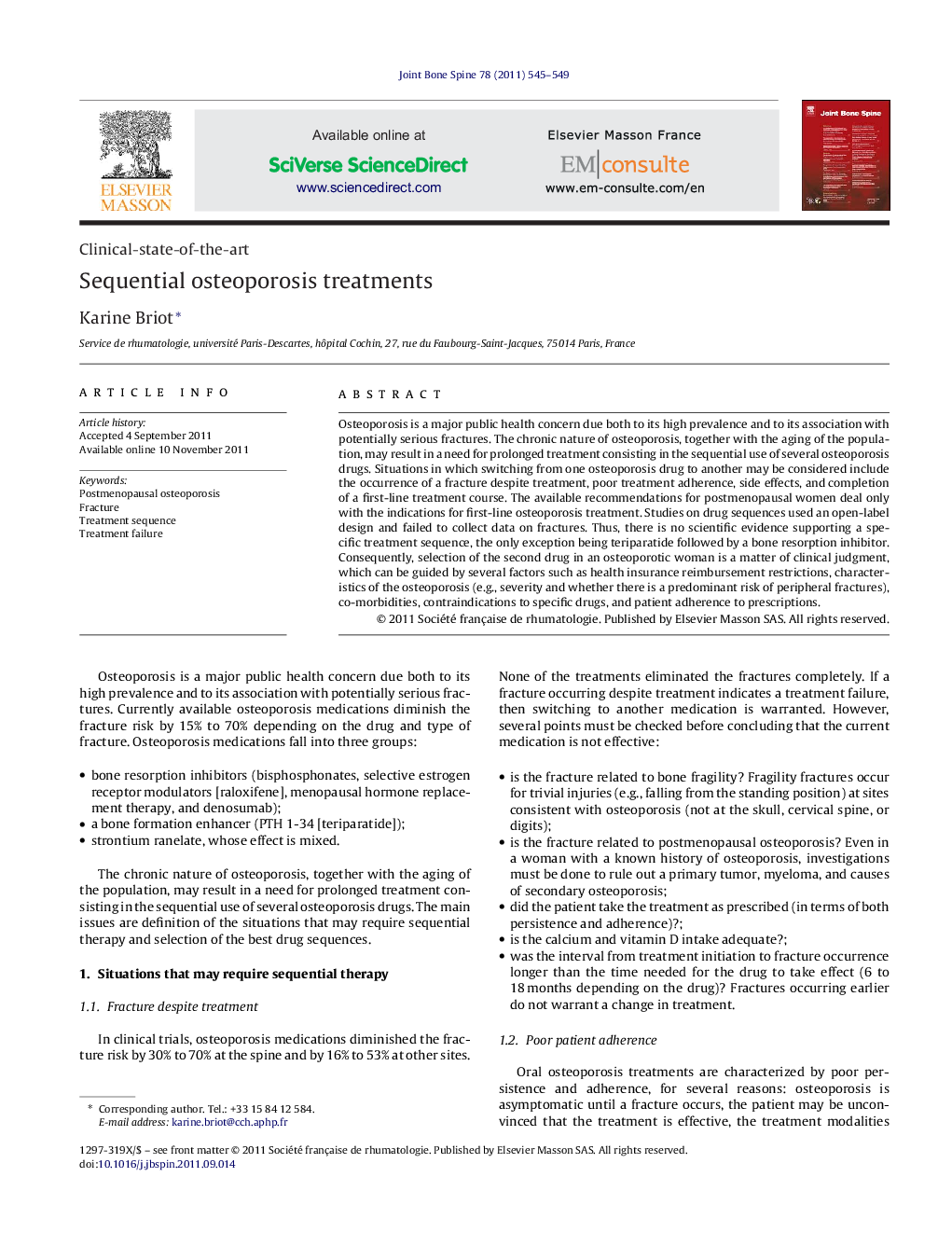| Article ID | Journal | Published Year | Pages | File Type |
|---|---|---|---|---|
| 3366514 | Joint Bone Spine | 2011 | 5 Pages |
Osteoporosis is a major public health concern due both to its high prevalence and to its association with potentially serious fractures. The chronic nature of osteoporosis, together with the aging of the population, may result in a need for prolonged treatment consisting in the sequential use of several osteoporosis drugs. Situations in which switching from one osteoporosis drug to another may be considered include the occurrence of a fracture despite treatment, poor treatment adherence, side effects, and completion of a first-line treatment course. The available recommendations for postmenopausal women deal only with the indications for first-line osteoporosis treatment. Studies on drug sequences used an open-label design and failed to collect data on fractures. Thus, there is no scientific evidence supporting a specific treatment sequence, the only exception being teriparatide followed by a bone resorption inhibitor. Consequently, selection of the second drug in an osteoporotic woman is a matter of clinical judgment, which can be guided by several factors such as health insurance reimbursement restrictions, characteristics of the osteoporosis (e.g., severity and whether there is a predominant risk of peripheral fractures), co-morbidities, contraindications to specific drugs, and patient adherence to prescriptions.
